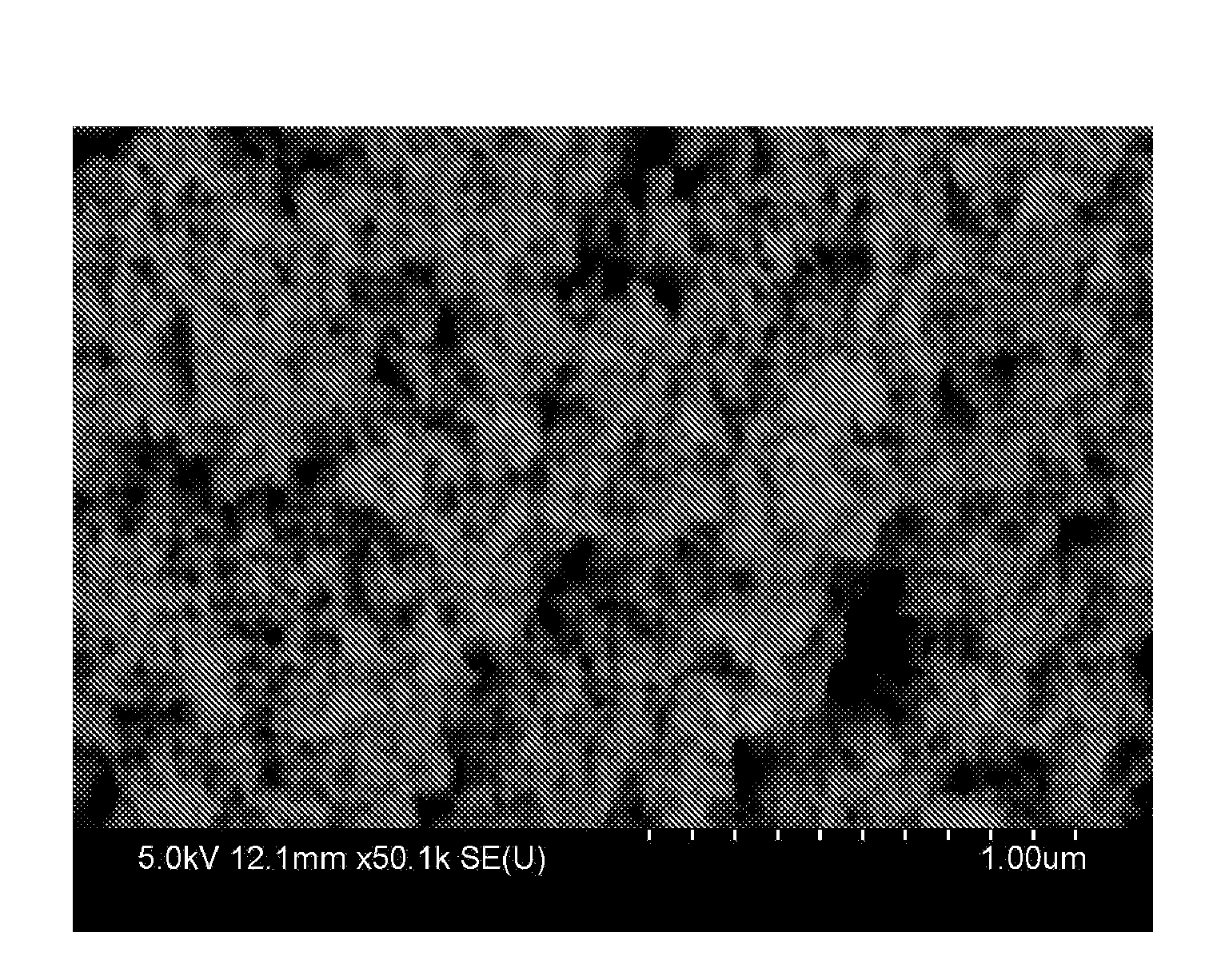Method of preparing metal nanoparticles for solar cell, ink composition including the metal nanoparticles, and method of preparing thin film using the same
a technology of solar cells and metal nanoparticles, which is applied in the direction of inks, semiconductor devices, transportation and packaging, etc., can solve the problems of less advanced czts-based solar cells than cigs-based solar cells, insufficient supply, and inability to meet the requirements of production, so as to reduce manufacturing costs, increase particle volume, and reduce the effect of oxidation resistan
- Summary
- Abstract
- Description
- Claims
- Application Information
AI Technical Summary
Benefits of technology
Problems solved by technology
Method used
Image
Examples
example 2
Synthesis of Cu—Sn Particles
[0099]A mixed aqueous solution including 10 mmol of CuCl2 and 10 mmol of SnCl2 was slowly added dropwise to an aqueous solution including 100 mmol of NaBH4, the resulting solution was stirred for 10 hours to induce reaction therebetween, and the formed particles were purified by centrifugation to prepare Cu6Sn5 bimetallic nanoparticles.
example 3
Synthesis of Cu—Sn Particles
[0100]A mixed aqueous solution including 12 mmol of CuCl2, 10 mmol of SnCl2, and 50 mmol of trisodium citrate was added dropwise over 1 hour to an aqueous solution including 60 mmol of NaBH4, the resulting solution was stirred for 24 hours to induce reaction therebetween, and the formed particles were purified by centrifugation to prepare Cu6Sn5 bimetallic nanoparticles. An SEM image and XRD graph of the Cu6Sn5 bimetallic nanoparticles are illustrated in FIGS. 2 and 3, respectively.
example 4
Synthesis of Cu—Sn Particles
[0101]A mixed aqueous solution including 10 mmol of CuCl2 and 10 mmol of SnCl2 was slowly added dropwise to an aqueous solution including 150 mmol of NaBH4, the resulting solution was stirred for 24 hours to induce reaction therebetween, and the formed particles were purified by centrifugation to prepare Cu6Sn5 bimetallic nanoparticles.
PUM
| Property | Measurement | Unit |
|---|---|---|
| temperature | aaaaa | aaaaa |
| absorption coefficient | aaaaa | aaaaa |
| band gap | aaaaa | aaaaa |
Abstract
Description
Claims
Application Information
 Login to View More
Login to View More - R&D
- Intellectual Property
- Life Sciences
- Materials
- Tech Scout
- Unparalleled Data Quality
- Higher Quality Content
- 60% Fewer Hallucinations
Browse by: Latest US Patents, China's latest patents, Technical Efficacy Thesaurus, Application Domain, Technology Topic, Popular Technical Reports.
© 2025 PatSnap. All rights reserved.Legal|Privacy policy|Modern Slavery Act Transparency Statement|Sitemap|About US| Contact US: help@patsnap.com



